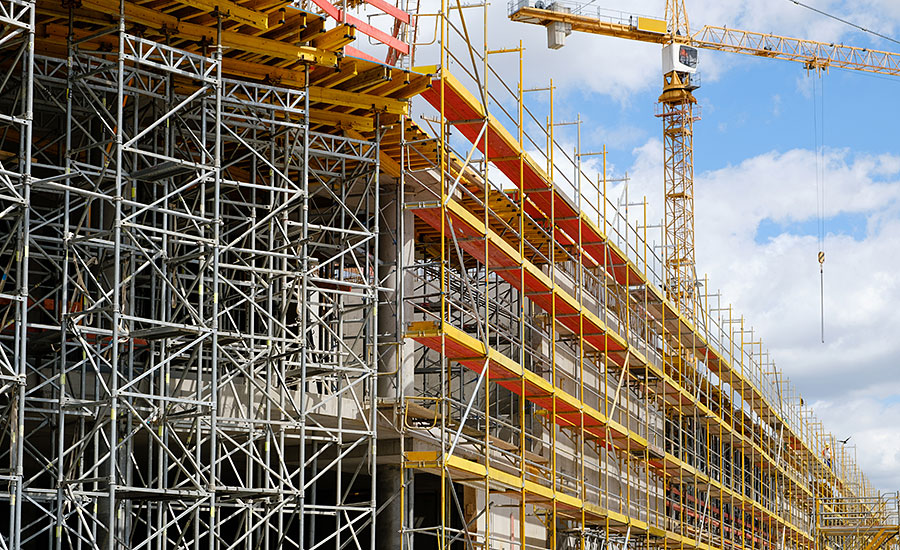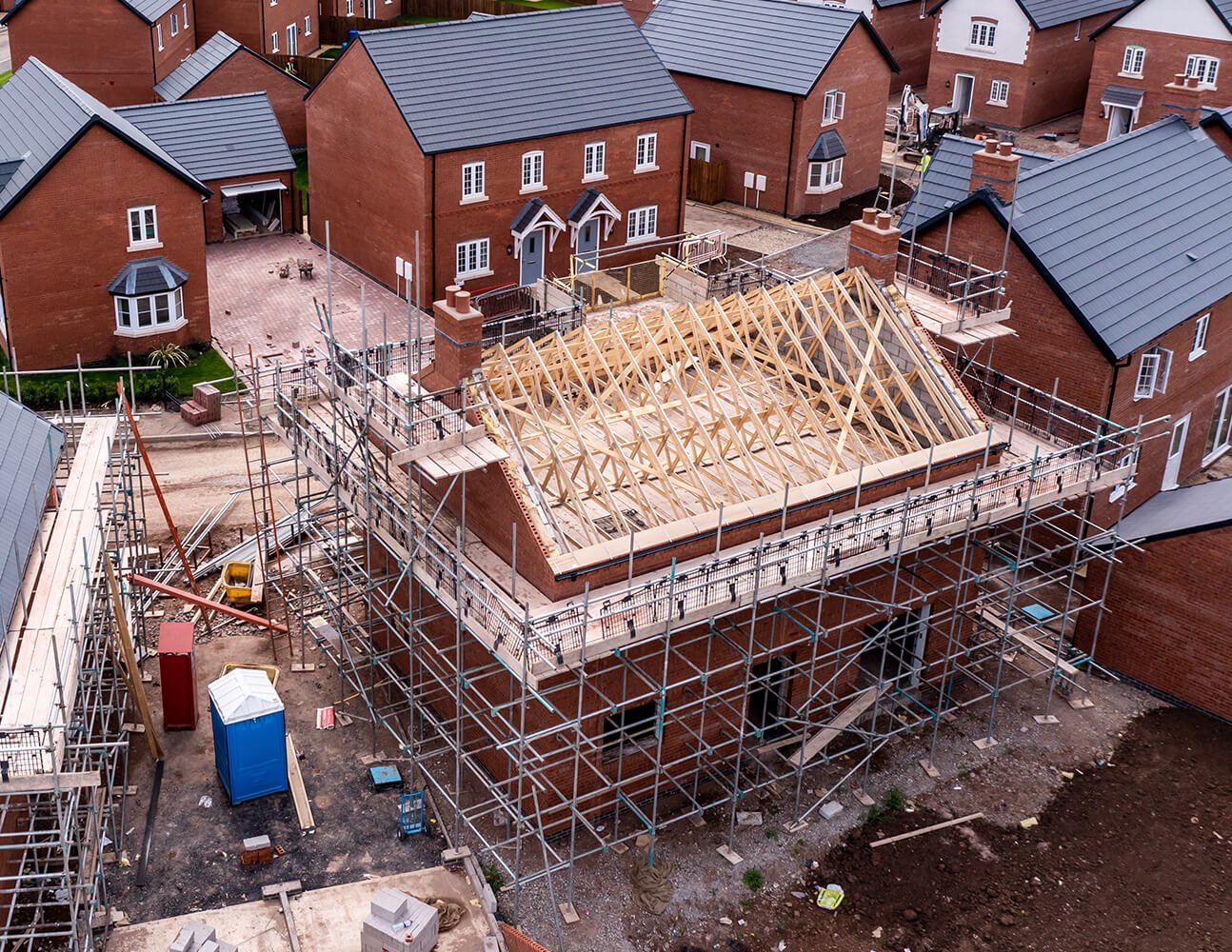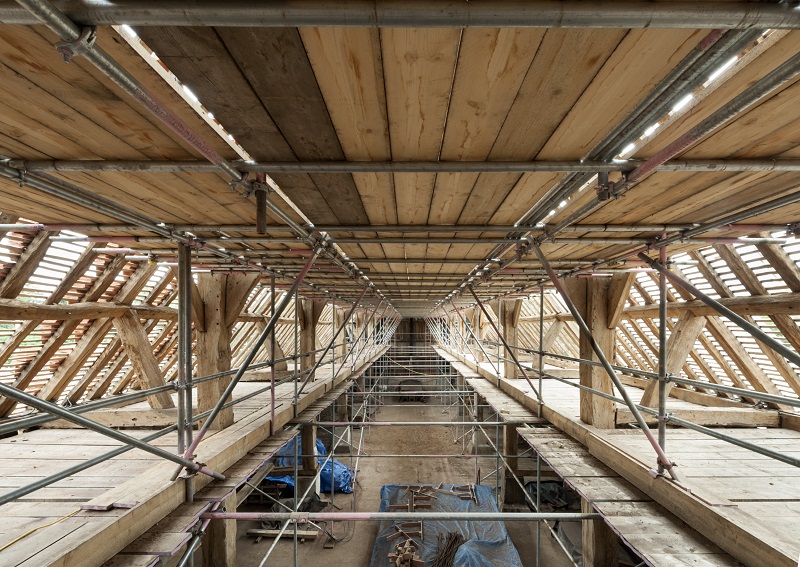High-Quality Residential Scaffolding for Seamless Home Renovations in Surrey
High-Quality Residential Scaffolding for Seamless Home Renovations in Surrey
Blog Article
Checking Out the Numerous Kinds of Scaffolding Used in Building Jobs
The building and construction industry depends heavily on numerous kinds of scaffolding to fulfill details task needs, each offering unique benefits and applications. Conventional frame scaffolding gives a durable structure for basic tasks, while put on hold scaffolding is necessary for job on skyscraper frameworks.

Traditional Framework Scaffolding
Conventional structure scaffolding is just one of the most extensively made use of methods in the building sector due to its toughness and adaptability. This system includes horizontal and upright frameworks that are constructed to develop a secure system for employees and products. The main elements include vertical posts, straight ledgers, and diagonal dental braces, which with each other give a solid structure that can sustain considerable tons.
One of the crucial advantages of traditional structure scaffolding is its flexibility to numerous construction jobs, ranging from household buildings to large business structures. The modular layout permits easy setting up and disassembly, making it effective for both long-term and temporary jobs. Furthermore, the system can be tailored in height and width, suiting various structure designs and site problems.
Safety and security is extremely important in scaffolding applications, and conventional structure systems are outfitted with guardrails and toe boards to stop drops and make certain employee security. Furthermore, routine assessments and adherence to safety and security guidelines are essential in preserving the integrity of the scaffold. Generally, typical framework scaffolding stays a basic selection in the building sector, providing a reputable system for labor and boosting overall project effectiveness

Suspended Scaffolding
Suspended scaffolding provides a distinct solution for building and construction jobs that need accessibility to raised surfaces, specifically in scenarios where standard frame scaffolding might be impractical. This sort of scaffolding is typically put on hold from the roofing or top degrees of a structure, utilizing a system of pulleys, ropes, and systems to develop a working area that can be gotten used to different heights.
Among the key benefits of suspended scaffolding is its adaptability. It can be easily rearranged or lowered to suit modifications in building and construction requirements, making it ideal for tasks such as home window installation, frontage work, and upkeep on skyscrapers. Furthermore, the minimal impact of put on hold scaffolding enables far better use of ground area in urban atmospheres, where room is frequently minimal.
Security is an essential factor to consider in the use of suspended scaffolding. On the whole, put on hold scaffolding gives a efficient and effective service for accessing hard-to-reach areas in numerous construction situations, improving both productivity and security on website.
System Scaffolding
System scaffolding, frequently concerned as a contemporary remedy in the scaffolding sector, is composed of pre-engineered elements that can be swiftly constructed and adjusted for numerous building jobs. Scaffolding. This type of scaffolding is defined by its modular design, which permits convenience and performance on job websites, fitting structural requirements and different elevations
Commonly made from high-strength steel or light weight aluminum, system scaffolding offers boosted resilience and stability. The parts include vertical posts, straight ledgers, this post and angled dental braces, which interconnect securely, making sure a durable structure. The design frequently incorporates standardized fittings, streamlining assembly and disassembly procedures, thus minimizing labor time and costs.

Rolling Scaffolding
Moving scaffolding is a functional option to typical fixed scaffolding, developed for flexibility and convenience of usage on building and construction sites. click reference This kind of scaffolding includes a system sustained by frameworks with wheels, permitting employees to easily transfer it as required. The flexibility attribute dramatically enhances productivity, as it minimizes downtime associated with assembling and disassembling dealt with scaffolding.
Generally constructed from light-weight products such as light weight aluminum or steel, rolling scaffolding uses a strong yet mobile option for jobs requiring constant repositioning - Scaffolding. It is especially useful in tasks such as paint, drywall installation, and electrical work, where accessibility to different heights and places is required
Safety and security is vital in rolling scaffolding style, with features such as locking wheels to avoid unintended activity when in operation, and guardrails to shield workers from drops. Furthermore, several versions are adjustable in elevation, accommodating numerous job demands.
Cantilever Scaffolding

The design of cantilever scaffolding commonly includes using brackets or arms anchored to a structure or structure, enabling the platform to prolong outside safely. Safety is vital; thus, these scaffolds should be engineered to hold up against ecological problems and different loads. Routine inspection and upkeep are necessary to ensure architectural integrity and employee security.
Cantilever scaffolding is favored for its adaptability and effective use room, making it a preferred choice in urban settings where area restraints are typical. It assists in less complicated access to high altitudes, ultimately adding to the total performance of construction jobs. As with all scaffolding kinds, correct training and adherence to security standards are essential for workers using cantilever scaffolding.
Final Thought
To conclude, the varied kinds of scaffolding utilized in building jobs each offer distinct objectives customized to particular website requirements. Conventional structure scaffolding provides stability, while suspended scaffolding supplies flexibility for elevated tasks. System scaffolding helps with fast setting up, and rolling scaffolding enhances wheelchair for differing job environments. Cantilever scaffolding efficiently resolves barriers in metropolitan setups. Understanding these scaffolding types is necessary for maximizing security and performance in construction, important site ultimately adding to the successful completion of tasks.
Traditional frame scaffolding provides a durable structure for basic tasks, while suspended scaffolding is important for job on skyscraper frameworks.Rolling scaffolding is a versatile choice to traditional set scaffolding, created for wheelchair and simplicity of usage on building and construction websites. As with all scaffolding types, proper training and adherence to security requirements are essential for employees using cantilever scaffolding.
Conventional frame scaffolding offers stability, while put on hold scaffolding uses adaptability for elevated jobs. System scaffolding promotes fast setting up, and rolling scaffolding boosts flexibility for differing work settings.
Report this page